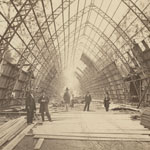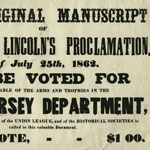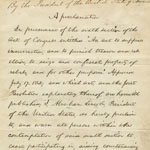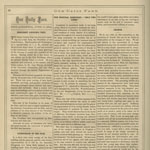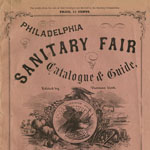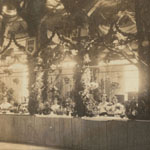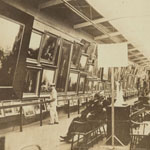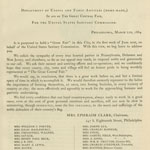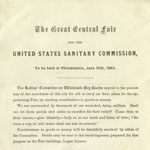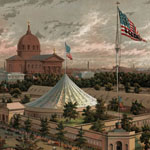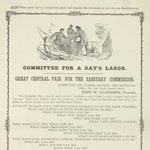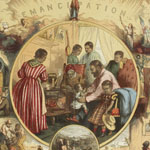Come to the Fair
The Great Central Fair, in support of the medical mission of the United States Sanitary Commission, was held here in June of 1864.
It was one of thirty such events across the North and (after New York’s fair) the most profitable, raising over one million dollars. The Fair was the most spectacular and dramatic civic event of the war, with average daily attendance of over 29,000 people – more than 250,000 in all. Following a call from the Union League in the winter, leaders of the business community and professional organizations mobilized a vast committee structure to organize the fair. It was a massive outpouring, with over 100 committees involving hundreds of Philadelphians, and McAllister collected all their printed appeals and reports. They held concerts and performances to raise funds. Craftsmen and laborers pledged a day’s wages to support the fair. And merchants and manufacturers donated their wares for sale. The result was a magnificent event of near-international exhibition dimensions. There was an art gallery, restaurant, displays of historic relics, merchandise of all sorts, a horticultural hall, and more – "The most wonderful display of everything under the sun," observed one visitor. Philadelphia’s response was enthusiastic, everyone impressed by the amazing variety of the displays and articles for sale. And a Library Company shareholder came home with a priceless historic artifact.
Click on images for a larger view.
